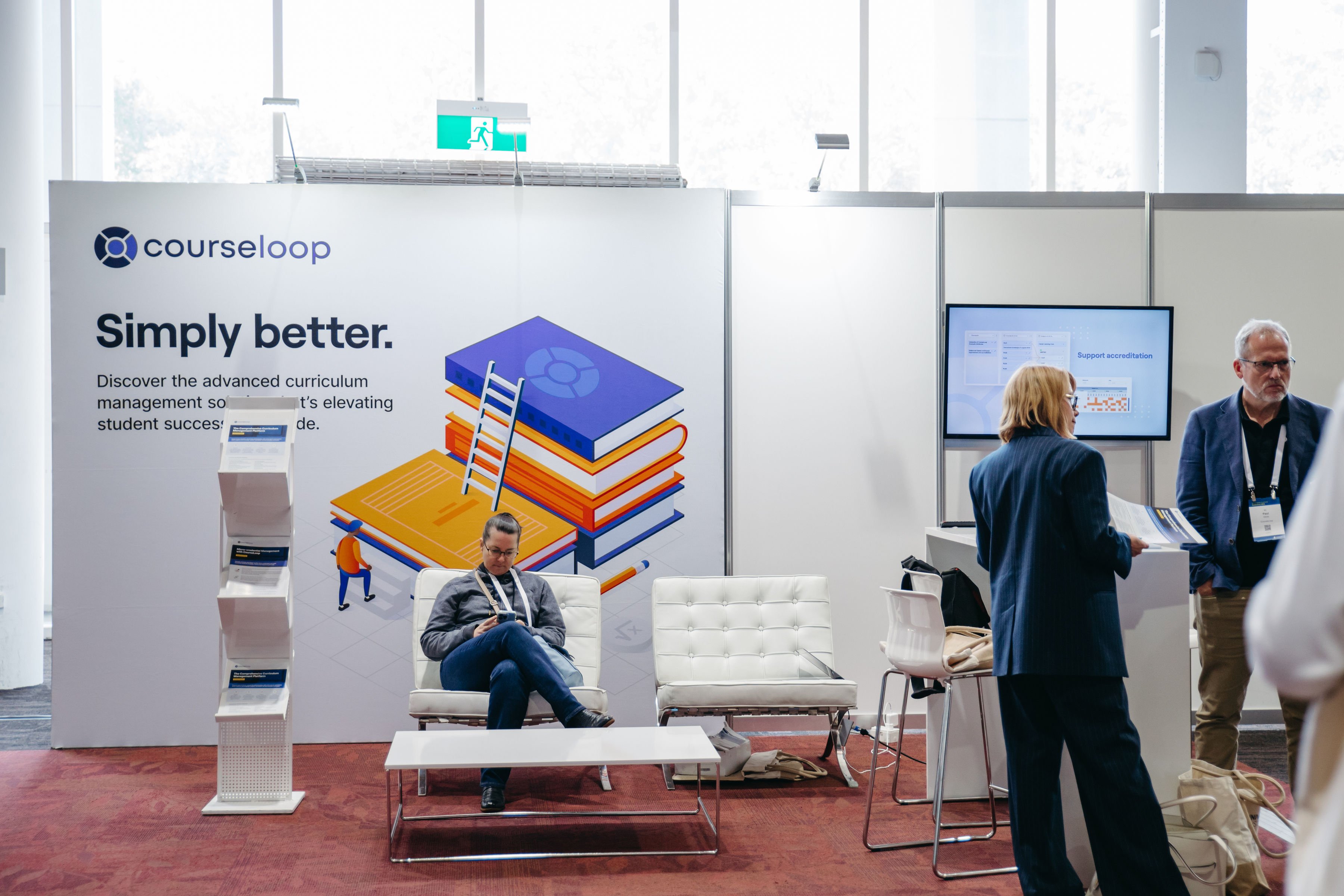Planning for success: Reflections from the Universities Aus conference
The recent Universities Australia Conference, held in Canberra, highlighted the most pressing challenges facing the higher education sector today.
Improving the student experience, creating job-ready graduates to fill the jobs and skills gap, and setting students up for success were among the top challenges discussed.
Graduates who had participated in a workplace integrated learning program during their studies “have consistently better labour market outcomes,” and are “3-4 percent more likely to be employed” compared to those who didn’t.
In this blog, we'll explore the challenges raised and discuss how curriculum management solutions like CourseLoop can help universities overcome them through simpler, more collaborative and connected processes that remove inefficiencies and make it easier to create world class curricula that set students up for success.
Real challenges that impact student success
Students had a very small yet prominent representation on some of the conference’s session panels. Most notably, they highlighted that they would like to see:
- Better communication about their study options
- Clearly defined progression pathways
- Better graduate outcomes via quality curriculum that embeds employability skills and opportunities for work based learning
Echoing concerns from a previous session, one student commented, “students are looking to their universities for assurance that the risk that they’re taking on in doing their degree is going to pay off in terms of employment in the field when they graduate.”
Indeed, as shown by the International Student Experience Survey (2021), 94% of students rated the perceived employment opportunity after completing a course to be one of the key deciding factors for where they would study in Australia. Unfortunately, as reported by Professor Peter Dawkins AO, “less than half of the applicants who are qualified are deemed suitable by the employers”. He cited a lack of experience and the absence of employability skills as reasons employers viewed candidates as unsuitable.

From left to right: Manasvi Walia, Varsha Devi Balakrishnan, Mita Das, Professor Peter Dawkins AO, and Professor Helen Bartlett
Some ways institutions can help overcome this preparedness barrier is through the inclusion of work integrated learning, which Professor Dawkins says should be part of the Australian Universities Accord discussions to drive policy, and embedding generic and employability skills into the curriculum, which he says, “will involve curriculum reform, pedagogy reform, and assessment reform.”
Work based learning – where study meets the workplace
Work based learning, work integrated learning (WIL) in particular, was raised by many as the main mechanism for bridging the gap between study and the workplace that often led to employment. Research for the Review of University-Industry Collaboration in Teaching and Learning (2021) found that “University graduates in areas of study with a high prevalence of WIL have consistently better labour market outcomes… These individuals are 3-8% more likely to be employed…”
One such example of this WIL-employment link in action was given by an international nursing student at the University of Southern Queensland who was hired two weeks into her 480-hour clinical placement. She said “I work for them [the hospital] as an assistant nurse until the end of my degree and once I become a registered nurse, they’ll have me as a registered nurse. So that [placement] is a big help.”
Undoubtedly, WIL has proven effective at helping students get jobs. However, some of the key challenges for implementing WIL programs is assuring quality and appropriately scaffolding work-based learning opportunities throughout the curriculum.

From left to right: Professor Karen Strickland, Anne Younger, Professor Chris Brebner, Judie Kay, and Professor Paddy Nixon
Ms Judie Kay, Vice Chair Programs and Partnerships and Executive Committee World Association of Cooperative Education and WIL (WACE), advises that, “every institution should have a WIL framework which can be derived from the National Work Integrated Learning Quality Framework developed by the Australian Collaborative Education Network (ACEN).” Using this and other best practice methods, institutions can better protect students, protect employers, and make sure that the necessary learning takes place.
Employability skills should future proof graduates for ongoing success in the workplace
Moreover, the 2021 Employer satisfaction survey reveals that of the five graduate attributes (foundation, adaptive, collaborative, technical, employability), the attribute that had the lowest rate of satisfaction agreement was employability skills (86.6% agreement).
Professor Attila Brungs said that in order to future proof graduates, universities have to “make sure our graduates are fundamentally versed in systems thinking, creativity, analytics, the ability to look at problems and work with other humans in [solving] this problem.”
 Professor Attila Brungs
Professor Attila Brungs
Discussion was also had on the merits of scaffolded employability skills, networking, and other work-based experiences in helping students learn how to reach out to employers while they are going through their education. It was suggested that this would help students gain confidence in themselves, otherwise it might result in highly skilled graduates ending up with lower paying jobs that underutilize their skills.
Setting students up for success – how CourseLoop can help
Nurturing students into employable graduates means continuously improving the curriculum and giving staff the right tools to help students succeed.
When it comes to supporting WIL and employability initiatives, CourseLoop makes the publication and discovery of accurate curriculum information easy, ensuring students don't miss opportunities to advance their skills and develop essential graduate attributes.
CourseLoop also makes curriculum creation and approval activities simpler, and includes the ability to demonstrate the elegance (coverage and coherence) and quality of your course design to support accreditation and improved reputation to further ensure the success of your students.
CourseLoop is a true end-to-end curriculum management system with superior ease of integration and user experience. Discover the advanced solution that's elevating student success worldwide.

(All images supplied by Universities Australia)

